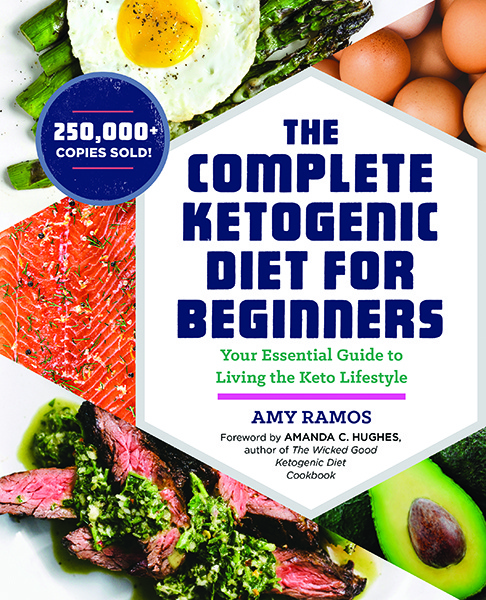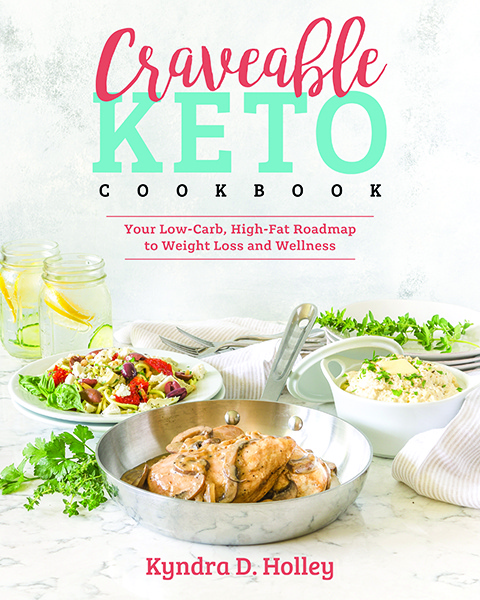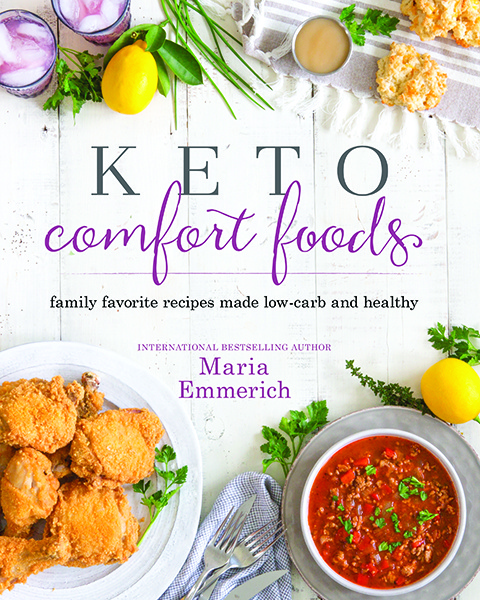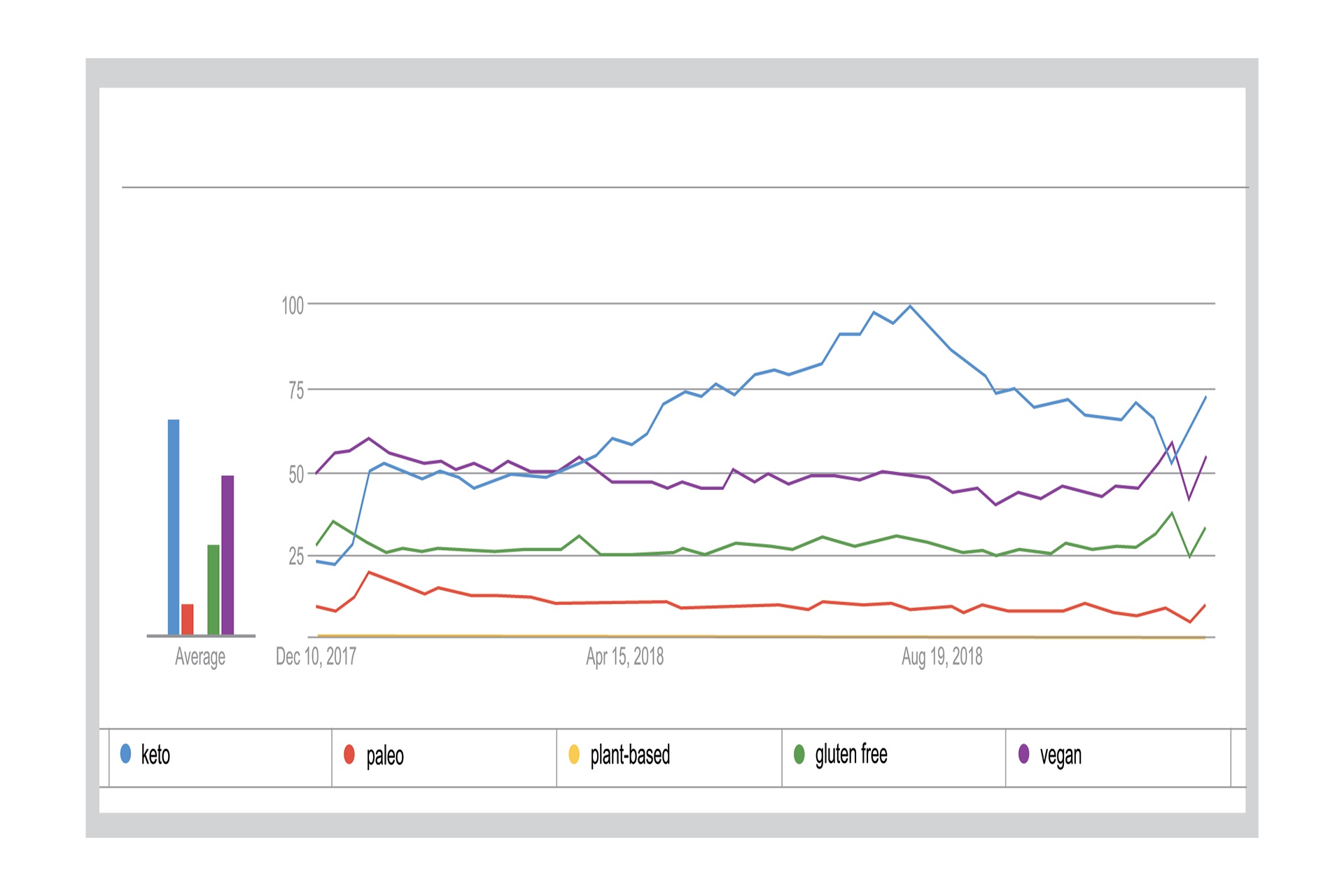Outsmarting the keto flu Irritability, cravings, headaches, hunger...in their initial days on a keto food formula, many new dieters report such concerns, which have been dubbed “keto flu.” Experts say the cause is a mixture of dehydration and detox, and add that there are strategies that can help both prevent and relieve it. (Of course, customers should always check with their healthcare provider before making any diet changes or taking supplements.)
The fix suggested from Andreas Eenfeldt, M.D., author of Low Carb, High Fat Food Revolution and founder and CEO of Diet Doctor, and Franziska Spritzler, R.D.: Increase water intake and salt consumption (1). The simplest version of this is to drink a glass of water with half a teaspoon of salt stirred in; tastier alternatives include drinking bouillon, bone broth or full-sodium chicken or beef stock. Regardless, Dr. Eenfeldt and Spritzler suggest that for the first week on keto, dieters will want to drink a minimum of 12 cups of liquid per day.
Another helpful tip from Dr. Eenfeldt: Add more fat (1). Butter is a keto go-to, and for consumers who are new to all the goodness lining your store shelves, this is an opportunity to introduce them to ghee—experts point out that this clarified butter is beneficial to those with dairy sensitivities.
Some customers might be looking for a supplemental assist. Brands like Ketologie and Sparta Nutrition make supplements designed to support the keto diet. These products either contain ketones or signal the body to create ketones, thereby easing or even preventing uncomfortable symptoms.
Overcoming the fear of fat It might be difficult for customers to get used to the full-fat aspect of the diet, considering how vilified dietary fat has been over the years. No doubt they’ll come in having done some research, but it’s one thing to decide to eat fat and another thing to fry bacon in butter and fry eggs in the leftover bacon grease.
Coconut oil, olive oil, heavy cream and butter are key ingredients for keto followers to have in their pantry, while low-fat anything needs to go. If they’re buying meat, urge them to consider a béarnaise sauce or other creamy sauce to finish it off with. When looking for coffee creamer, remind them to skip the low-fat creamer, and consider the fact that many people on keto use butter, ghee, coconut oil or heavy cream—all unsweetened, of course. If they’re buying veggies, remind them not to steam their broccoli: Cook it—and all other foods—in butter and oil. Suggest that they skip the low-fat dressings and opt instead for oil.
If a customer is already doing all of that and still feels hungry, they may need more ways to incorporate fat into their diet. Some ideas you can suggest: Butter can be flavored with parmesan or bacon to add in extra fat. Or they could opt for a “fat bomb”—that’s a little keto treat made with a fat of their choice—coconut butter, coconut oil, cream cheese, nut butter—and add-ins like lemon zest, cinnamon, vanilla, sesame seeds and chopped nuts. A blog like www.KetoConnect.net has recipes your customers might enjoy.Good Health Reads: Top-selling Keto books

The Complete Ketogenic Diet for Beginners: Your Essential Guide to Living the Keto Lifestyle (Rockridge Press, 2016) by Amy Ramos This diet book has an explanation of the keto lifestyle, a 14-day meal plan, recipes and a shopping list to make keto easier to follow. Online reviewers call it a crash course in restocking the kitchen and learning to rethink fats and carbs.

Craveable Keto: Your Low-Carb, High-Fat Roadmap to Weight Loss and Wellness (Victory Belt Publishing, 2018) by Kyndra Holley The story of one woman’s keto journey, through the good and the bad. Reviewers rave that Holley covers the day-to-day aspects of living keto that tend to fall through the cracks.
Keto Comfort Foods: Family Favorite Recipes Made Low-Carb and Healthy
 (Victory Belt Publishing, 2017) by Maria Emmerich
This cookbook contains information about
ingredients and how to read the recipes, which are labeled according to dairy, egg, and nut content. Highlights include the comfort food recipes, which reviewers say add variety to their diet.Working keto into a busy life
Keto calls for a dietary ratio that’s quite different from the Standard American Diet, and some consumers may have trouble making the shift to getting 60% to 75% of their calories from fat, 15% to 30% from protein and just 5% to 10% from net carbs. In terms of the frozen or pre-made foods that dominate store shelves, many low-carb options tend to also be low-fat, and many high-fat foods tend to be protein-rich—and that’s a problem, because excess protein can be broken down into carbs, making ketosis hard to attain and maintain.
(Victory Belt Publishing, 2017) by Maria Emmerich
This cookbook contains information about
ingredients and how to read the recipes, which are labeled according to dairy, egg, and nut content. Highlights include the comfort food recipes, which reviewers say add variety to their diet.Working keto into a busy life
Keto calls for a dietary ratio that’s quite different from the Standard American Diet, and some consumers may have trouble making the shift to getting 60% to 75% of their calories from fat, 15% to 30% from protein and just 5% to 10% from net carbs. In terms of the frozen or pre-made foods that dominate store shelves, many low-carb options tend to also be low-fat, and many high-fat foods tend to be protein-rich—and that’s a problem, because excess protein can be broken down into carbs, making ketosis hard to attain and maintain.That is set to change as keto continues to grow. Label Insight data shows there are 43,000 products that are keto-compliant, although only 600 currently made a keto claim (2). This can be how you make your store the go-to for your local keto adherents: Make a point of calling out high-fat, low-carb pre-made or ready-to-eat foods, whether in the freezer, at a deli counter, in a hot bar, or in baked goods. Gather no-sugar-added beef jerky, almond or macadamia nut butter, pork rinds and kale chips into one keto-compliant snack display. Put organic pepperoni slices and full-fat cheese wheels in the same freezer section, and make sure keto shoppers know why these items are grouped together.
For consumers who feel a bit lost without their bread and pasta, you can assure them that there’s no need to worry about a shrinking menu, lack of diversity in their meals, or the loss of innovation in the kitchen. On the contrary, their menu is broadened, and their creative culinary side has a whole new world to explore. Maria Emmerich, author of multiple keto cookbooks, whose blog can be found at MariaMindBodyHealth.com, suggests using deli sliced chicken breast in place of the pasta in lasagna, and powdered pork rinds as the base for pancakes (4,5). Keto expert Mark Sisson, who can be found at MarksDailyApple.com, suggests using cold cuts as tortillas filled with keto-compliant burrito ingredients (3). With a few helpful hints to get them started, your customers will realize that foods they never would have considered before are there for the experimentation—and your store will become their go-to shop for expanding their diet horizons. WF
 References:
References:
- Andreas Eenfeldt and Franziska Spritzler, “The keto flu, other keto side effects, and how to cure them,” dietdoctor.com, updated 11/27/18. Accessed 11/27/18. https://www.dietdoctor.com/low-carb/keto/flu-side-effects
- Kira Karapetian, “Why Transparency is the Key to Successfully Following Your Diet,” WholeFoods Magazine, 02/01/18. Accessed 11/27/18. https://wholefoodsmagazine.com/blog/transparency-key-successfully-following-diet/
- Mark Sisson, “The Keto Reset Diet Cookbook,” Harmony Books, 2018.
- Maria Emmerich and Emma Shevtzoff, “Maria’s keto pancakes,” dietdoctor.com. Accessed 11/27/18. https://www.dietdoctor.com/recipes/marias-keto-pancakes
- Maria Emmerich and Emma Shevtzoff, “Easy protein noodle low-carb lasagna,” dietdoctor.com. Accessed 11/27/18. https://www.dietdoctor.com/recipes/easy-protein-noodle-low-carb-lasagna









